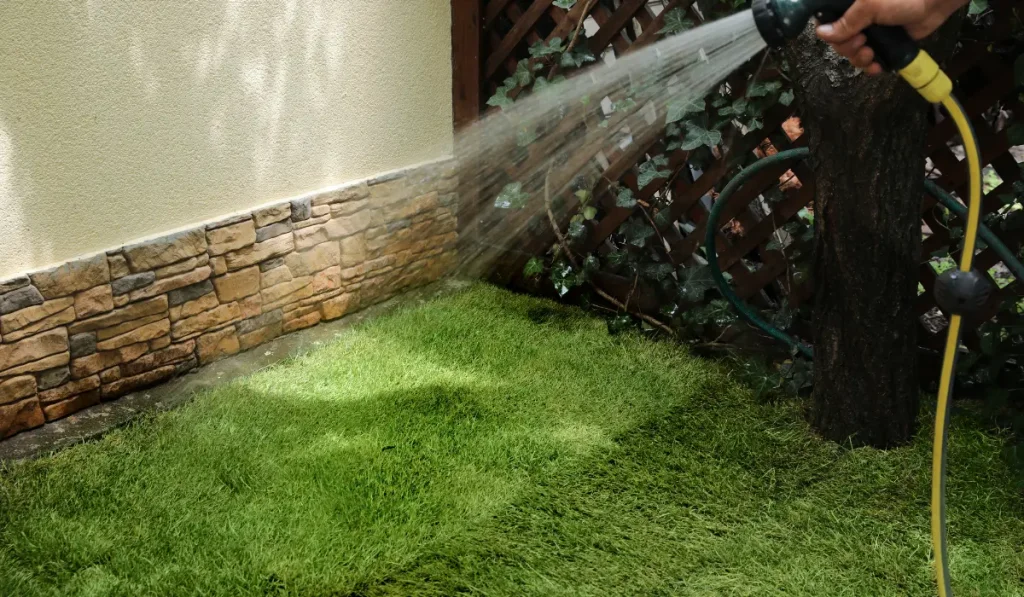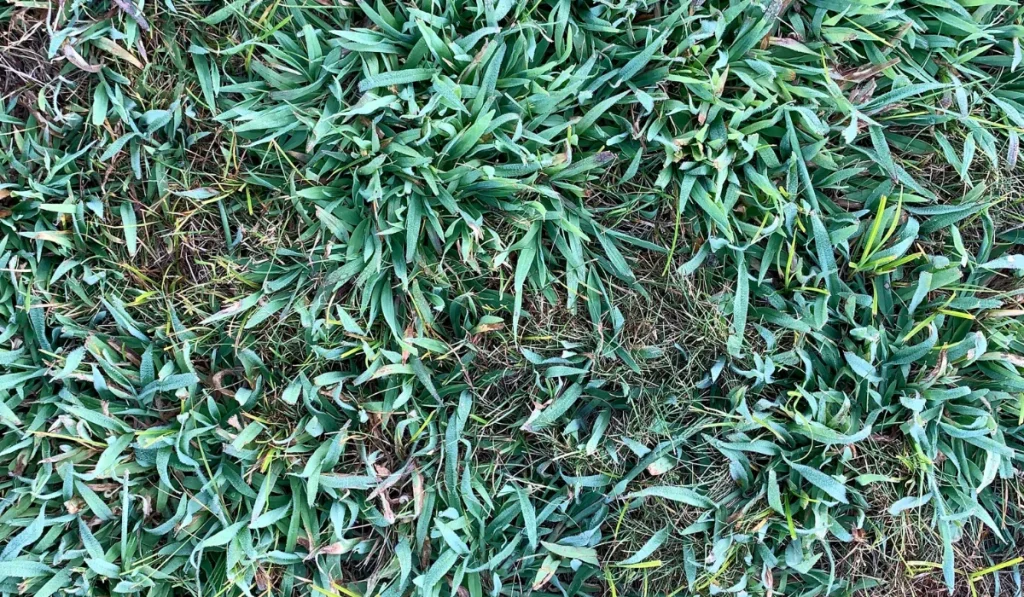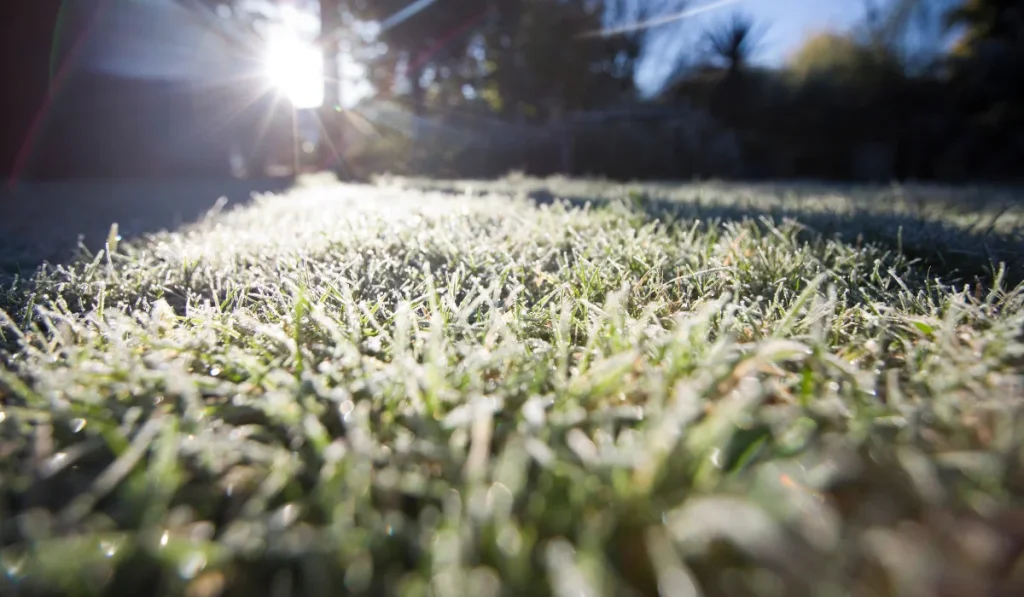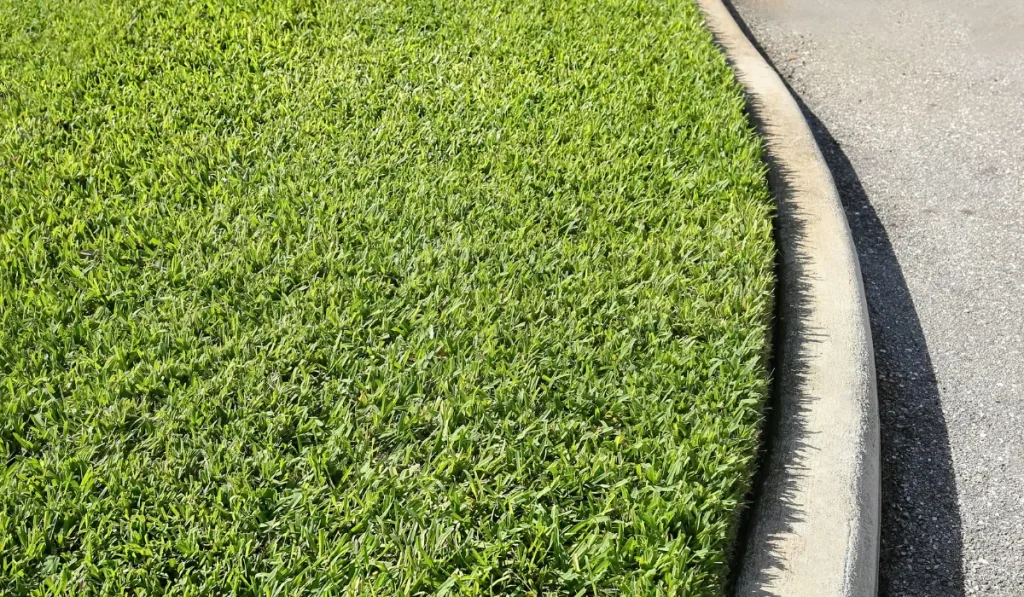Did you know improper watering is a leading cause of new sod failure? In Los Angeles, with its warm climate, knowing how to water new sod correctly is crucial.
Keep reading to learn the most essential watering tips for your Los Angeles lawn.
Key Takeaways
- The first two weeks require frequent watering to help the sod’s roots grow.
- Checking the soil moisture with a meter or by hand will help you decide how much water the sod needs based on the weather.
- Tools like timers and in-ground irrigation systems ensure the water spreads evenly and saves water.
- Healthy sod is lush and firm, and checking these signs can tell you if you’re watering it right.
Watering Schedule for New Sod in Los Angeles
The first month is crucial for new sod in Los Angeles. Intensive watering in the first week helps ensure that the roots establish.
We also encourage homeowners to reduce watering frequency in weeks two, three, and four to encourage growth without overwatering.
Here are some general guidelines.
Weeks 1-2: Frequent Watering
The two weeks after installing new sod is essential for its long-term health. The sod needs to remain moist to help the root system anchor into the soil and start growing.
When watering a new sod the first time, increase the frequency to prevent drying out, especially on warmer days of the growing season.
| Aspects | Details |
|---|---|
| Frequency | 3-4 times daily |
| Best Time | Early morning, mid morning, and early afternoon |
| Amount of Water | Approximately 1 inch of water per day |
Weeks 3-4: Reduce Watering Frequency
After the first two weeks, adjust how often you should water your lawn. This period allows the new sod to adapt to the local environment while still supporting its growth.
By reducing how often you water, the roots will grow deeper to establish a strong root system, which is critical for a healthy lawn.
| Aspects | Details |
|---|---|
| Frequency | 2 times daily |
| Best Time | Early morning, mid morning, and early afternoon |
| Amount of Water | About 1 1/2 inch of water per week |
After 4 Weeks: Establishing a Watering Routine
By the fourth week, the sod should be well-established, needing a consistent yet less frequent watering routine. This period focuses on maintaining the lawn’s health and promoting its growth without excessive watering.
Proper watering during this stage ensures the lawn sustains growth and prepares it for the first mowing.
Related: Overwatering or What? Why Your Grass Is Growing So Fast
| Aspects | Details |
|---|---|
| Frequency | 2-3 times weekly |
| Best Time | Early morning |
| Amount of Water | 1 ½ inches of water per week |
Best Practices for Watering New Sod
Properly caring for new sod requires more than a watering schedule. Understanding the specific needs of the sod type, monitoring soil moisture, and adjusting practices based on weather conditions can promote a healthy and vibrant lawn.
Check Soil Moisture Regularly
Monitoring the moisture of your soil type is crucial to ensure new sod lawns get the right amount of water.
In Los Angeles, frequent changes in temperature and humidity can cause soil to dry out quickly. Here’s how to do it:
- Use a soil moisture meter to get an instant reading.
- Manually check the topsoil for dryness up to 6 inches deep.
- Look for signs of moisture stress, like wilting or turning bluish-green.
- Modify watering schedules based on the moisture readings.
Adjust Based on the Weather
In Southern California, including Los Angeles, weather patterns can be unpredictable. Adjusting watering schedules according to the weather ensures that new sod gets the right amount of water.
| Weather Pattern | Recommended Action |
|---|---|
| Hot Days | Increase watering to counteract higher evaporation. |
| Cooler Days | Decrease watering to avoid soggy soil and runoff. |
| Rainy Periods | Pause irrigation to prevent excess water. |
| Windy Conditions | Ensure watering happens early in the morning. |
Implement Efficient Watering Tools
Using the right tools can make watering new sod more efficient and effective. For homeowners, you have various water-saving options, especially when choosing drought-tolerant grass varieties.
For instance, you can set timers and zones in sprinkler systems for even water distribution.
Ensure Uniform Coverage
Ensuring uniform water coverage is critical for a healthy sod lawn. Any uneven watering can lead to patchy and unhealthy turfgrass.
To ensure a lush front yard, position sprinklers for overlapping coverage and regularly check nozzles for clogs. Adjust sprinkler angles and water pressure to address dry spots and optimize lawn hydration.
Learn the Signs of Proper Hydration
Knowing the indicators of a well-hydrated sod lawn can make the care process easier. Healthy turfgrass from reputable sod farms will display certain characteristics if watered properly.
| Indicators | Details |
|---|---|
| Color | A lush green color |
| Texture | Firm and springy grass blades |
| Growth | Consistent growth pattern without yellowing patches |
| Roots | Deep root growth |
Integrate Mulching Techniques
Mulching can provide numerous benefits for new sod, such as retaining moisture and adding nutrients. Using organic mulch carefully may help combat evaporation during a drought to maintain soil health.
Using grass clippings or shredded leaves from mowers, spread a very thin layer (2-3 inches) around the sod. Regularly check the soil closely for excessive moisture.
Record Water Usage
Keeping track of water usage helps in managing resources and improving the watering efficiency of the sod lawn. Los Angeles homeowners who are concerned about water conservation will benefit from this.
Address Water-Related Diseases
Improper watering can cause lawn diseases like brown patch, dollar spot, and Pythium blight in new sod, leading to discolored patches, moldy growth, and wilting.
To maintain a healthy lawn, promptly identify and treat these diseases. Avoid overwatering and ensure good aeration to prevent issues.
Treat affected areas with appropriate fungicides and seek effective management advice from lawn care experts.
Hire Lawn Care Professionals
Getting expert advice can result in a more vibrant and durable lawn. At SodLawn, we understand the needs of perennial, cool- and warm-season grasses such as Bermuda, St. Augustine, Zoysia, and Tall Fescue.
They also provide access to specialized equipment and offer personalized consultations for tailored sod care solutions.



